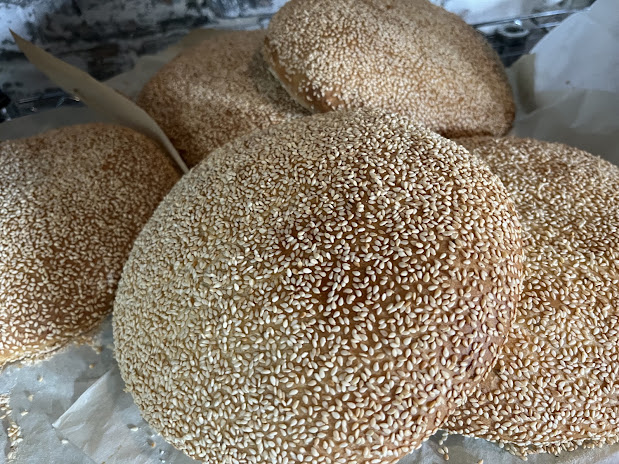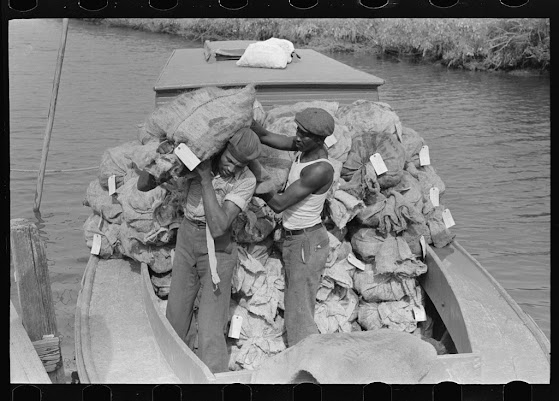Muffulettu, an Origins Sandwich Story
What's a Muffulettu? The World in a Sandwich
by Dana Honn, Jan 21, 2024
To answer the question “what's a muffulettu or muffuletta?” requires a response that bridges
country, culture and beliefs. If you were to ask that question in New Orleans, the response
would be very different than if you did so in Sicily, which is a great place to start, as it was
there where cultures collided, or possibly converged to create one of the world's great
sandwiches.
Let's start with a definition ... the name “muffulettu,” “muffoletta,” “muffuletta,” or “pan
Buffetto,” referred to a soft and spongy bread, becoming synonymous with a swollen and soft
texture. It is believed to have roots in the French term 'mouflette,' signifying softness.
Another theory states the moniker is perhaps a derivative of muffe ("fungus," "toadstool"),
maybe because the circular sandwich bread has a certain mushroom cap vibe. The
variations like muffoletta and its spin-offs are contemporary Italian twists on the original
Sicilian. For the purposes of this article, we'll stick with “muffulettu.”
What is certain is that any variation of the word muffulettu refers to the bread. In Sicily,
generally a round, flat sesame seed bread seasoned with spices like anise or cumin. The
choice of bread in Sicilian cuisine, influenced by local baking traditions, is integral to the
muffulettu sandwhich.
The original Sicilian muffulettu, boasts a fascinating history influenced by multiple cultures.
While its exact origins are challenging to trace, it is believed to have roots in the Arab or
Persian cultures that left their mark on Sicily during different historical periods.
During the 9th to the 11th century, Sicily was under Arab rule, fostering a significant
exchange of culinary and cultural traditions. Arab contributions, including olives, olive oil and
unique spice-seasoned breads are believed to have influenced the creation of the muffulettu
with its focus on these and other local ingredients such as tuna, anchovies, hard pungent
cheeses (like pecorino and caciocavallo) and herbs.
The religious significance of the muffulettu can't be understated, and its character in different
religious celebrations is varied. For example, devotees express their gratitude by promising
offerings, such as throwing two baskets of the bread to San Calogero of Agrigento. In
Palermo, for “Giorno dei Morti” (Day of the Dead or All Souls Day) “muffuletti” were
traditionally included among the gifts left by the deceased on the morning of November 2nd.
These were typically enjoyed for breakfast, drizzled with olive oil and accompanied by salted
anchovies, oregano, and either 'caciocavallo' or ricotta. In Canicattì, situated in the province
of Agrigento, muffuletti continue to be a part of the “vamparotti” festival—bonfires lit on the
eve of the Immaculate Conception. Additionally, across much of Sicily, the muffulettu takes
center stage during the feast of the Madonna del l'Immacolata, featuring a filling of olive oil,
anchovies, and black olives.
For certain, there are regional variations of the muffulettu throughout Sicily, but Licata, a city
located on Sicily's south coast, holds an especially strong cultural connection to the bread
and its fillings. This suggests that it could have its origins there. The ancient story of the
muffulettu in Licata traces its origins from being stuffed with sausage during Easter
celebrations to its evolution pairing perfectly with tuna. Over time, the muffulettu became a
Thursday tradition in Licata, a city with numerous ovens preparing this delightful bread.
Today, the muffulettu with tuna remains a significant part of the Good Friday procession in
Licata, maintaining its historical and gastronomic importance.
To piece together a credible story of how and when the muffulettu made its way to New
Orleans requires some informed speculation. It would be difficult to imagine that the
thousands who arrived in the early 19th century in addition to the massive wave of 200,000+
Sicilians who immigrated to New Orleans from 1870 – 1910 didn't bring with them many of
their strong culinary traditions. Indeed, we know they did. Ingredients such as Sicilian
lemons, tomatoes, varieties of cheese, olive, olive oil, pasta, anchovies, tuna and other items
were substantially introduced to a larger national audience via New Orleans; that's an epic
story in its own right (check out the Progresso Foods story). Some of these very ingredients
also appear prominently in the muffulettu, as well as other popular dishes. Couple that with
the fact that by the beginning of the 20th century, several local bakeries were producing
Sicilian-style sesame bread and the odds are that the original Sicilian version, as well as new
iterations of the sandwich were at least somewhat known and possibly common by the late
1800s in New Orleans. This idea is born out by historical accounts which recount that Sicilian
immigrant workers would gather at the French Market and purchase the individual elements
of the “muffoletta” ... the sesame rolls, olives, meats and cheese separately, essentially
each building their own lunch creation. Did some of those creations resemble the original
Sicilian version? It would seem probable given the available local ingredients included
plentiful and inexpensive Gulf tuna, and that was part of their history, what they knew.
As most New Orleanians know, Central Grocery played a key role in popularizing, one might
say creating through codification, New Orleans' version of the muffuletta sandwich in 1904.
This occurred when Salvatore Lupo, Central Grocery's owner, decided to cater to those
Sicilian workers and build a sandwich for them which would satisfy their palates. One must
note that there is some debate as to how this occurred, and the competing Progresso
Grocery also staked claim to the original New Orleans muffuletta. Whoever was first, this
Americanized version features a round Sicilian sesame bread filled with cured meats,
cheese, and olive salad. Without a doubt, the adaptation to local tastes and the addition of
olive salad (rather than simply olives) distinguish it from its Sicilian ancestor. That makes it
original and the fact that it evolved from earlier roots takes nothing away from its creators.



Comments
Post a Comment